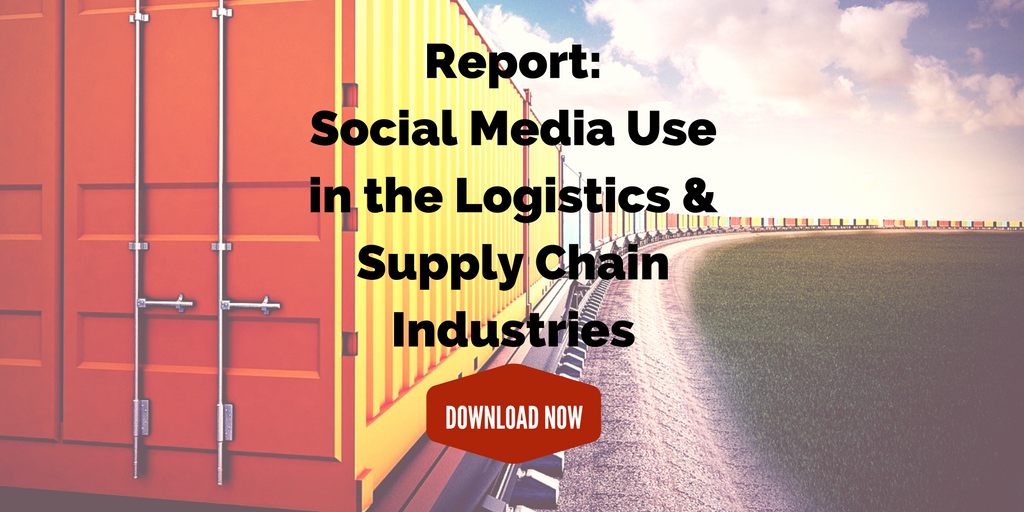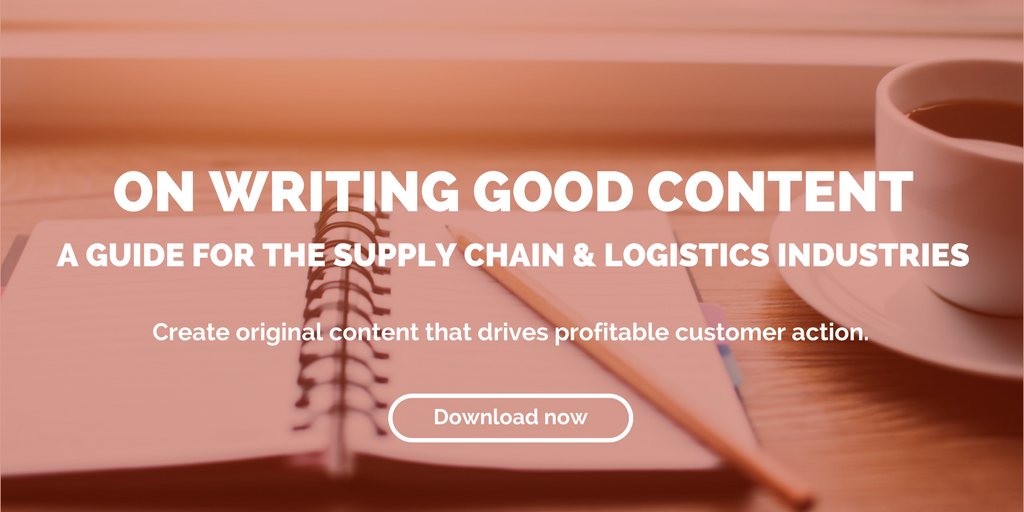
by Fronetics | Jan 9, 2019 | Blog, Content Marketing, Logistics, Marketing, Supply Chain
Email subject lines can make or break an email marketing campaign. Read on for our dos and don’ts for creating an effective subject line.
Email marketing is an unquestionably effective content marketing tactic for B2B businesses. But too often, marketers lose out on potential benefits by focusing too much on internal details while overlooking the importance of the subject line.
It may seem silly, but think about it: When you see an email pop up in your inbox, how do you decide whether or not to open it? If you’re like 47% of all email recipients, you decide to open it based on the subject line alone. And furthermore, if you’re like a whopping 69% of email recipients, you report it as spam purely based on the subject line.
[bctt tweet=”47% of all email recipients decide to open email based on the subject line alone. And if you’re like a whopping 69% of email recipients, you report it as spam purely based on the subject line.” username=”Fronetics”]
Here are some email subject line dos and don’ts.
7 email subject line dos and don’ts
1. Do: be specific; Don’t: be vague
It’s tempting to think that the mystery of a vague subject line will pique the interest of the recipient. But think again. An overly vague teaser is simply annoying and uninteresting. Make sure that the subject line gives an accurate preview of what recipients will find when they open the email.
2. Don’t: send incessant reminders
While it’s great to stay in the forefront of your prospects’ minds, sending too many reminders about the same subject or offer is just plain annoying. Not only that, if your audience doesn’t mark you as spam, their email system might automatically do so anyway.
3. Do: send regular messages at strategic times
It’s true that constant reminders are not your friend — but that doesn’t mean you shouldn’t be sending out regular messages to the various segments of your email list. Just make sure your subject lines show variation based on the content, or else your recipients will think they’re receiving the same message over and over again.
4. Don’t: Use all capital letters
If you’re sending someone a message in all capitals, it’s the equivalent of yelling at them. Too many marketers think that the caps-lock is a sure way to capture a reader’s attention. In fact, it’s much more likely that they will send you straight to the trash.
5. Do: Personalize
Personalizing marketing emails increases open rates, click-throughs, and revenue. But it’s not as simple as just addressing recipients by name. We’ve written in detail about how to personalize marketing emails, but suffice it to say that personalized subject lines mean that users are 22% more likely to open your emails. The more information you track in your email database, the easier it will be to target your emails to your readers, making them feel that they are being personally addressed.
6. Don’t: Be sloppy
You’d be surprised how often people make these 5 email subject line mistakes. For example, misspellings, poor grammar, and excessive use of punctuation can make your open rates plummet. Check out our list — and don’t fall into the trap!
7. Do: Use Psychology
If you’re not up on the latest internet jargon, we’ve got one for you: FOMO, the “fear of missing out,” can be a powerful motivator of user behavior. While vague subject lines won’t work, using phrases like “last day to enter…” or “don’t miss out…” make your readers more likely to open your emails, simply because of FOMO.
A bad email subject line is a sure way to cripple otherwise well-thought-out email marketing tactics. But a good subject line can boost engagement, increase open and click-through rates, and spell more conversions.
Related posts:


by Fronetics | Dec 5, 2018 | Blog, Content Marketing, Logistics, Marketing, Supply Chain
Content marketing is reshaping the sales process. Here’s what this strategic resource can do for you.
We’ve said it before, and we’ll probably say it again: content marketing is not about making a sales pitch. Nor is it a substitute or replacement for an expert sales staff. However, with the right strategy, and with a closely aligned sales and marketing team, this inbound approach to marketing can revolutionize the way supply chain businesses approach sales.
There’s no question that content marketing has changed the sales process. Thanks to the content and resources available to them, potential customers are more informed as they enter the buyer’s journey. Content marketing helps generate a steady flow of quality leads and provides targeted information to usher prospects down the sales funnel.
[bctt tweet=”Content marketing helps generate a steady flow of quality leads and provides targeted information to usher prospects down the sales funnel.” username=”Fronetics”]
In this new environment, marketing and sales need to work in tandem to be at their most effective. This way they can help each other generate leads, nurture current leads more effectively, and close more deals. Here are three important ways content marketing is changing the way businesses accomplish these goals:
1) Inbound over outbound
Old school marketing was all about outbound — a marketing approach that pushes a message onto a buyer. Traditional advertising — tv and radio ads, telemarketing, banner and display ads — are all examples of outbound marketing. Content marketing takes the opposite approach: inbound marketing.
Inbound marketing focuses on audiences finding you. Instead of pushing a message onto buyers, inbound marketing allows you to establish your brand as an industry leader and let interested audiences come to you. This type of marketing attempts to draw in potential customers through interesting and engaging content.
When it comes to sales, inbound marketing is a game-changer. Content marketing is all about creating a relationship with prospects and paving the way for the sales team to nurture and develop that relationship. Your sales staff is empowered to nurture more leads through to conversion when they are armed with effective, targeted content.
2) Providing information
Once your prospect is ushered into the sales funnel, content marketing can help your sales team continue the conversation. The content you share with prospects at this stage of the buyer’s journey should be designed to answer informed questions and demonstrate that your products and services are there to meet their needs.
Quality content is your sales staff’s best friend. As sales personnel answer questions from prospects and help guide them toward conversion, email, blog, and other types of content are key to keeping prospects interested and moving them down the funnel.
3) Cultivate loyalty
Converting leads is important, but it’s only half the battle. Cultivating loyal customers for your business is crucial to success. Content marketing can not only help you do this, but it can turn those loyal customers into ambassadors for your brand.
Your sales staff should use the high-quality content and guidance provided by your marketing team to engage with satisfied customers on social channels like Facebook, Instagram, and Twitter. Rather than trying to push products, they can use these social spaces to share expert information and foster conversations that will lead other prospects to your business.
Content marketing and sales are a match made in heaven. Curating and creating great content will generate quality leads for your company. It also empowers your sales force to build relationships with potential customers — and close the sale.
Related posts:


by Elizabeth Hines | Sep 19, 2018 | Blog, Content Marketing, Data/Analytics, Logistics, Marketing, Supply Chain
Automation has two major benefits for supply chain marketers: it drives efficiencies and improves success rates in earning and converting leads.
When you think about automation in the supply chain, you probably don’t immediately consider marketing and sales. Perhaps you envision robots scooting around warehouse floors, or maybe you think of applications in billing, compliance reports, or order auditing. However, advances in automation have impressive implications for marketing and sales in the supply chain as well.
Automation has two major benefits for supply chain marketers. Like all automation, it drives efficiencies, allowing your team to devote more time to other core competencies. What you may not know, however, is that it also improves success rates in earning and converting leads. In fact, HubSpot reports that businesses using marketing automation to nurture leads receive a whopping 451% increase in qualified leads.
New trends in marketing automation – particularly those which function more like artificial intelligence – can streamline and improve your marketing and sales efforts. Here’s how.
Integrate marketing automation into your CRM strategy
Integrating marketing automation into your customer relationship management (CRM) strategy may not be the first thing that came to mind, but the two work beautifully in tandem.
An integrated approach will take all three of the following areas to the next level:
- Track behavior. Automation lets you go far beyond basic demographic data, seeing things like what pages your prospects are visiting, what types of content they’re interested in, and where they are in the buying cycle.
- Send targeted messages. You can use the behavioral information collected by your marketing automation tool to create and send targeted messages that are customized to your prospects’ interests and stage in the buying cycle. This means your prospects will find your messages more relevant and engaging.
- Establish clear ROI. Establishing a clear link between marketing efforts and sales is a constant thorn in the side of most marketers, but new advances in automation make measuring ROI a little clearer. Creating a campaign in your marketing automation system maps it back to your CRM, so you can correlate closed deals directly with the campaigns that created them.
Basically, combining CRM with marketing automation can give you more organizational bandwidth, more precision in your messaging and lead nurturing, and more measurable value in your campaigns.
Create targeted messages with email workflows
There’s no area in which marketing automation is more helpful than in the creation of automated but extremely pertinent email workflows to your sales leads.
Based on the information you have about your leads and/or their engagement with your website, email workflows trigger a series of pre-determined highly-relevant emails at designated intervals, inviting them to take action and helping them to move down the sales funnel.
Email workflows do require considerable work upfront as you consider individual buyer profiles, their place within the buyer’s journey, and what timely and relevant information will advance them. But thoughtful well-designed email workflows can translate to substantial time savings and increases in lead conversion later.
More marketing automation: Social media scheduling tools & chatbots
Two other areas in which automation is making a big splash in marketing and sales are social media scheduling tools and chatbots.
The targeted approach of email workflows increases their chances of being read, but I don’t need to point out that – no matter how perfect your email might be – people are still buried in emails. On average, office employees receive 121 emails per day. Only around 20% are opened, and click-through rates are even lower.
[bctt tweet=”On average, office employees receive 121 emails per day. Only around 20% are opened, and click-through rates are even lower.” username=”Fronetics”]
So, in addition to email workflows, the newest trends in automation are social media scheduling tools and chatbots. Both of them can make your job much easier — and improve your bottom line.
Social media scheduling tools
Social media scheduling tools, like those offered by HubSpot and Hootsuite, let you plan and schedule content across your social networks.
For example, HubSpot’s comprehensive CRM and marketing platform includes the ability to automatically post to social media when you publish content, as well as in-depth analytical tools for determining the best time to post to social media platforms. You can also monitor social mentions and link your social media activity with larger marketing campaigns to determine ROI.
Hootsuite lets you keep track of various social media channels at once. It also helps you perform brand monitoring, letting you know when you brand is mentioned, and what your customers are saying.
As you can imagine, using a social media monitoring tool can greatly improve efficiency, cutting into the sometimes-seemingly-endless manual hours spent on social media monitoring and posting.
Chatbots
A chatbot is s a computer program that simulates human conversation using auditory or textual methods. It communicates with your customer inside a messaging app, like Facebook Messenger, and is similar to email marketing without landing in an inbox.
Chatbots are the latest trend in marketing, and their increasing popularity is making it harder to ignore how artificial intelligence is helping shape the content marketing landscape. It’s certainly timely. Business Insider recently reported that the number of people on messaging apps surpassed the number of users on social networks!
Messaging automation is the new email automation, and it can work for supply chain and logistics industries too. Chatbots currently allow for increased customer engagement through messaging app technology that isn’t yet saturated with marketing, and your brand will also appreciate the ease of tracking and segmenting your customers through chatbots.
Marketing automation is for the supply chain
Automation isn’t just for the warehouse or the finance and billing department. It’s also for this crazy constantly-changing world of marketing in supply chain and logistics industries. Marketing automation can make a big difference in your marketing and sales efforts.
Integrating automation with your CRM strategy, creating targeted email workflows, and the newest advances like social media scheduling tools and chatbots can all add up to major time savings and substantial increases in lead conversion rates.
This post originally appeared on EBN Online.
Related posts:


by Fronetics | Aug 22, 2018 | Blog, Content Marketing, Logistics, Manufacturing & Distribution, Marketing, Strategy, Supply Chain
Account-based marketing has traditionally utilized outbound marketing tactics, until now.
Account-based marketing has been around for decades, but it has been gaining a lot of attention in the past few years. More and more companies are starting to use account-based marketing to increase their brand awareness with specific audiences and work together with sales teams to close deals.
But what is account-based marketing?
Account-based marketing
Account-based marketing (ABM) is a focused approach to B2B marketing in which marketing and sales teams work together to target best-fit accounts and turn them into customers. Marketers and sales teams focus their efforts on specific accounts — companies, customers, target audiences — and work to get marketing materials in front of them.
Essentially, account-based marketing takes a potential customer and turns them into their own market. “[ABM] is to address the needs of organization by connecting with all of the stakeholders within it. That’s one reason why it works so well in B2B — oftentimes you have to work with five or more stakeholders in a given sale,” writes Sam Balter, HubSpot’s Corporate Marketing Manager.
So how can content marketing help with ABM, which has traditionally been a sales strategy?
Content marketing and account-based marketing
Inbound marketing focuses on audiences finding you. Instead of pushing a message onto buyers, inbound marketing allows you to establish your brand as an industry leader and let interested audiences come to you. This type of marketing attempts to draw in potential customers through interesting and engaging content.
Content marketing is a type of inbound marketing that uses blog posts, social media, infographics, and video to expose target audiences to a brand.
Merging sales and marketing efforts
There’s no reason that ABM and content marketing can’t work together. In fact, you’re missing out on maximizing your marketing efforts if you aren’t incorporating both of these marketing strategies in your overall marketing plan.
[bctt tweet=”Traditional sales pitches are no longer pushing buyers down the sales funnel. Instead, buyers want a personalized experience, where they feel they are getting to know a brand before they make a buying decision.” username=”Fronetics”]
Today’s buyers don’t want to be ‘sold.’ Traditional sales pitches are no longer pushing buyers down the sales funnel. Instead, buyers want a personalized experience, where they feel they are getting to know a brand before they make a buying decision.
What does this mean for your ABM strategy? It means that content marketing can help educate and inform the specific accounts your sales team has identified through valuable, interesting content.
“For example, if you approach any content you create as part of the strategy with both goals in mind, you can create a piece of content that is both incredibly useful from a keyword perspective (and drives a ton of traffic to your site) while also providing all the key information that you’d like to say to your ABM contacts,” writes Stacy Willis for Impact.
When creating content for any marketing effort, the key is to make sure that your content has value. Whether you’re trying to attract a specific account or looking to increase web traffic, content marketing focuses on value and not just volume.
Creating a cohesive account-based marketing and inbound marketing strategy will help maximize your marketing efforts. Though not traditionally used together, it’s time to think outside the box and start seeing the benefits of a joint marketing approach.
Related posts:


by Fronetics | Aug 20, 2018 | Blog, Content Marketing, Logistics, Marketing, Strategy, Supply Chain
Here’s a breakdown of the latest findings regarding the best time to send an email and what we recommend for getting the most of out of your email marketing efforts.
We are all inundated with daily emails. Whether it’s work emails, special offers from brands you love, or straight-up spam email, we all have inboxes full of emails – most of which will never be opened.
But, on the flip side, “email is the third most influential source of information for B2B audiences, behind colleague recommendations and industry thought leaders,” reports WordStream.
So how do you get your emails to stand out in cluttered inboxes? How do you get readers to actually open — and scroll through — your thoughtfully crafted content?
At Fronetics, we believe there isn’t a one-size-fits-all answer to what works best for email marketing. In order to be successful, you need to take into consideration:
- Who is your target audience?
- What job titles do they hold?
- What kind of devices do they use?
- When are they commuting to work?
Taking a look at the schedules and habits of your target audience will give you insight into the optimal times for readers to engage with your emails. Here’s Jennifer Hart Yim, director of strategy at Fronetics, with a look at what we recommend when trying to find your optimal time to send marketing emails.
[bctt tweet=”Taking a look at the schedules and habits of your target audience will give you insight into the optimal times for readers to engage with your emails. ” username=”Fronetics”]
Video: When is the best time to send an email?
Takeaway: Trial and error
As with most aspects of content marketing, there’s no universal answer to the best time to send marketing emails. The only way to truly know what works best for your company is trail and error. You’ll have to test dates and times to find the best time to send an email your target audience.
But keep in mind that there are other factors, aside from date and time, that affect open and click-through rates. You’ll also have to play around with frequency, subject lines, length of emails, and the overall look and feel of your email.
Have you tested your best time to send an email? What worked for your company?
Related posts:











